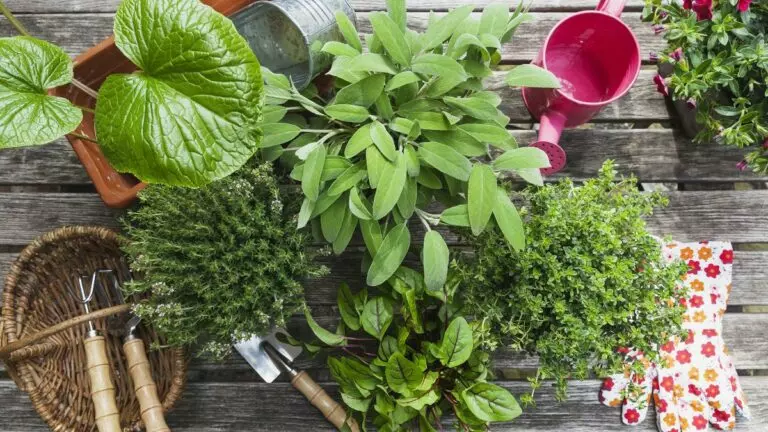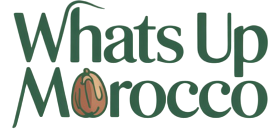
Imagine wandering through the bustling souks of Marrakech, the air thick with the scent of spices and herbs, where vibrant stalls brim with bundles of dried leaves, roots, and flowers. Among the chaos of colors and sounds, you stumble upon an elderly herbalist, her hands weathered from years of grinding plants into powders and brewing teas. She offers you a cup of mint tea, infused with a hint of something unfamiliar—a local herb said to soothe the stomach and calm the mind. This is the heart of Moroccan traditional medicine, a centuries-old practice deeply rooted in the country’s rich biodiversity and cultural heritage. In this blog post, we’ll dive into the fascinating world of traditional Moroccan medicinal plants, exploring their uses, benefits, and the stories that make them so integral to Moroccan life.
Morocco, nestled in North Africa, boasts over 4,200 plant species, with nearly 500 recognized for their medicinal and aromatic properties. This incredible biodiversity, shaped by the country’s diverse climates—from the Atlas Mountains to the coastal plains—has fostered a deep-rooted tradition of phytotherapy, or plant-based healing. For generations, Moroccans have turned to these plants to treat everything from digestive issues to respiratory ailments, often blending ancient knowledge with Islamic, Arab-Berber, and European influences. But what makes these plants so special, and how are they used today? Let’s embark on a journey through Morocco’s herbal legacy, weaving together science, culture, and practical tips for anyone curious about natural remedies.
The Roots of Moroccan Herbal Medicine
Moroccan traditional medicine is a tapestry woven from the threads of Amazigh (Berber), Arab, and Mediterranean influences. Healers, known as achabas or ferragat, have long relied on plants to address health concerns, particularly in rural areas where modern medicine can be costly or inaccessible. According to a 2022 study conducted at the University Hospital Center in Oujda, 76% of patients interviewed used medicinal plants to treat conditions like diabetes and hypertension, citing their affordability and perceived efficacy. This reliance isn’t just practical—it’s cultural. Plants like thyme and rosemary aren’t just remedies; they’re symbols of Morocco’s connection to the land.
The knowledge of these plants is often passed down through generations, primarily by women who serve as the backbone of household healthcare. Picture a grandmother in a Rif Mountain village teaching her granddaughter how to brew chamomile tea for sleepless nights or grind nigella seeds for a cold. This oral tradition, combined with written records from Islamic scholars like Ibn al-Baytar, has preserved a pharmacopoeia of over 230 medicinal plants, as documented in a 1991 study. Yet, as modernization encroaches, there’s a growing need to document and validate this knowledge before it fades.
Key Moroccan Medicinal Plants and Their Uses
Morocco’s diverse flora offers a treasure trove of healing plants, each with unique properties backed by both tradition and science. Below, we’ll explore some of the most commonly used plants, their applications, and the bioactive compounds that make them effective. These plants are often prepared as decoctions, infusions, or powders, and their uses range from culinary to therapeutic.
Thyme (Zaatar)
Thyme, or zaatar in Moroccan Arabic, is a staple in both kitchens and apothecaries. Its aromatic leaves, rich in essential oils like thymol, are prized for their antimicrobial and expectorant properties. Traditionally, thyme tea is used to treat coughs, bronchitis, and digestive issues. A 2016 study found that thyme’s essential oils exhibit strong antibacterial activity, making it a go-to for respiratory infections. In Moroccan homes, you might find thyme steeped in hot water with honey to soothe a sore throat or added to tagines for flavor and digestion.
- Uses: Respiratory ailments, digestive issues, antimicrobial support.
- Preparation: Infusion (tea), decoction, or essential oil.
- Fun Fact: Thyme is so revered that it’s often kept on dining tables, much like salt and pepper in other cultures.
Rosemary (Iklil al-Jabal)
Rosemary, known as ikleel al-jabal, thrives in Morocco’s coastal and mountainous regions. Its woody scent enhances roasted meats and stews, but its medicinal uses are equally impressive. Traditionally, rosemary is believed to boost memory and circulation, a claim supported by a 2017 study showing its potential cognitive benefits. Moroccans often brew rosemary tea to relieve headaches or use its essential oil for muscle pain.
- Uses: Cognitive support, circulation, pain relief.
- Preparation: Tea, essential oil, or topical application.
- Cultural Note: Rosemary is sometimes burned as incense to ward off negative energy.
Mint (Nana)
No Moroccan experience is complete without a glass of mint tea, but this herb, called nana, is more than a refreshing drink. Mint’s cooling properties make it a remedy for indigestion, bloating, and headaches. A 2020 review highlighted mint’s ability to relax the gastrointestinal tract, supporting its traditional use for digestive woes. In rural Morocco, mint leaves are chewed raw or brewed into tea to ease nausea or congestion.
- Uses: Digestive health, headache relief, respiratory support.
- Preparation: Fresh leaves, tea, or essential oil.
- Tip: Add a sprig of fresh mint to your water for a natural digestive aid.
Artemisia (Shiba)
Artemisia, or shiba, grows in Morocco’s arid regions and is a powerhouse for treating digestive issues and parasitic infections. Its bitter leaves contain artemisinin, a compound with proven antimalarial properties, as noted in a 2015 study. In traditional Moroccan medicine, artemisia tea is used for fever, digestive disorders, and even as an anti-inflammatory. However, caution is advised, as high doses can be toxic.
- Uses: Digestive issues, fever, parasitic infections.
- Preparation: Decoction or infusion.
- Warning: Consult a healthcare provider before using artemisia due to potential toxicity.
Nigella Seeds (Habba Sawda)
Nigella seeds, known as habba sawda or “black seed,” are a cornerstone of Moroccan and Islamic medicine. The Prophet Muhammad reportedly said they’re “a cure for everything except death.” These tiny seeds are packed with thymoquinone, an antioxidant with anti-inflammatory and antidiabetic properties, as confirmed by a 2021 study. Moroccans use nigella seeds in teas, breads, or as a paste for joint pain and colds.
- Uses: Anti-inflammatory, antidiabetic, immune support.
- Preparation: Tea, paste, or sprinkled on food.
- Cultural Note: Nigella seeds are often mixed with honey for a potent remedy.
Comparison Table: Popular Moroccan Medicinal Plants
| Plant | Local Name | Primary Uses | Key Compounds | Preparation Methods | Regions Found |
|---|---|---|---|---|---|
| Thyme | Zaatar | Respiratory, digestive, antimicrobial | Thymol, carvacrol | Tea, decoction, oil | Nationwide |
| Rosemary | Iklil al-Jabal | Cognitive, circulation, pain relief | Rosmarinic acid | Tea, oil, topical | Coastal, mountainous |
| Mint | Nana | Digestive, headache, respiratory | Menthol | Tea, fresh leaves | Fertile plains |
| Artemisia | Shiba | Digestive, fever, parasitic infections | Artemisinin | Decoction, infusion | Arid regions |
| Nigella Seeds | Habba Sawda | Anti-inflammatory, antidiabetic, immune | Thymoquinone | Tea, paste, culinary | Nationwide |
The Science Behind the Tradition
While Moroccan herbal medicine is steeped in tradition, modern science is catching up. Ethnobotanical studies, like those conducted in the Rif and Atlas regions, have identified over 344 plants used for diabetes alone, with families like Asteraceae and Lamiaceae dominating due to their rich phytochemical profiles. These plants contain bioactive compounds—flavonoids, alkaloids, terpenoids—that inhibit enzymes like α-amylase and α-glucosidase, helping regulate blood sugar. In vivo studies have also shown plants like Trigonella foenum-graecum (fenugreek) and Nigella sativa reduce blood glucose and enhance insulin secretion.
However, not all plants are safe. A 2006 study in the Moroccan Journal of Biology highlighted 28 toxic species, including Atractylis gummifera, which can cause severe liver damage. This underscores the importance of consulting knowledgeable herbalists or healthcare providers, especially since improper preparation or dosing can lead to adverse effects. In 2020, the Moroccan Poison Control Center reported that 2.1% of poisoning cases were linked to medicinal plants, emphasizing the need for caution.
Cultural Significance and Modern Challenges
Moroccan medicinal plants are more than remedies—they’re a bridge to the past. In rural communities, women like the ferragat play a vital role in preserving this knowledge, using plants to treat everything from burns to cancer. A 2019 survey at the Moroccan National Institute of Oncology found that cancer patients often combined plants like rosemary and nigella with conventional treatments, believing they enhanced efficacy. This blend of tradition and modernity reflects Morocco’s unique healthcare landscape.
Yet, challenges loom. Urbanization and commercialization threaten agrobiodiversity, as noted by the High Atlas Foundation. Modern crops often replace traditional varieties, risking the loss of endemic species like Moroccan thyme (Thymus atlanticus). Climate change and overharvesting also endanger plants like argan and atlas cedar. Initiatives like seed banks aim to preserve this heritage, but more effort is needed to document oral traditions and validate plant efficacy through clinical trials.
Practical Tips for Using Moroccan Medicinal Plants
Curious about incorporating these plants into your life? Here are some actionable tips, grounded in tradition and safety:
- Start Simple: Brew a cup of mint or thyme tea for digestion or relaxation. Use 1–2 teaspoons of dried leaves per cup of hot water, steeping for 5–10 minutes.
- Source Wisely: Purchase herbs from reputable suppliers or local markets to ensure quality. Look for organic, sustainably harvested options.
- Consult Experts: Before using potent plants like artemisia, consult a healthcare provider or herbalist, especially if you’re pregnant or on medication.
- Experiment in Cooking: Add nigella seeds to breads or rosemary to roasted vegetables for both flavor and health benefits.
- Grow Your Own: Mint and thyme thrive in pots, making them easy to cultivate at home. Check out gardening guides for tips.
FAQ: Common Questions About Moroccan Medicinal Plants
Q: Are Moroccan medicinal plants safe to use?
A: Many are safe when used correctly, but some, like artemisia or Atractylis gummifera, can be toxic in high doses. Always consult a professional and start with small amounts.
Q: How do Moroccans prepare these plants?
A: Common methods include decoctions (boiling plant parts), infusions (steeping in hot water), powders, and essential oils. Leaves and seeds are the most used parts.
Q: Can I combine these plants with modern medicine?
A: Some plants, like nigella, may complement treatments, but interactions are possible. A 2022 study showed 75% of type 2 diabetic patients in Morocco combined herbs with drugs, but always check with a doctor.
Q: Where can I learn more about Moroccan herbal medicine?
A: Books like Medicinal Plants of Morocco by Jamal Bellakhdar or online resources like PubMed offer detailed insights.
Q: Are these plants available outside Morocco?
A: Yes, herbs like thyme, rosemary, and nigella seeds are widely available in health food stores or online. Look for authentic, high-quality sources.
Conclusion: Embracing Morocco’s Herbal Legacy
As we’ve journeyed through the vibrant world of Moroccan medicinal plants, it’s clear that these natural remedies are more than just folklore—they’re a testament to human ingenuity and resilience. From the soothing mint tea sipped in a bustling medina to the potent artemisia decoctions brewed in remote villages, these plants carry the wisdom of generations. They remind us of a time when people lived in harmony with nature, using its gifts to heal and thrive.
But this legacy isn’t frozen in time. Modern science is uncovering the secrets behind these plants’ efficacy, from thymol’s antimicrobial powers to artemisinin’s antimalarial prowess. Yet, as we embrace these remedies, we must do so with respect and caution, honoring the knowledge of Morocco’s healers while acknowledging the risks of misuse. Whether you’re sipping a cup of chamomile tea or sprinkling nigella seeds on your morning toast, you’re tapping into a tradition that spans centuries and continents.
So, what’s next? Start small—perhaps grow a pot of mint on your windowsill or explore a local Moroccan market if you’re traveling. Dive into ethnobotanical studies to deepen your understanding, and always approach these remedies with curiosity and care. Morocco’s medicinal plants aren’t just a glimpse into the past; they’re a guide to a more sustainable, holistic future. Let’s keep this heritage alive, one leaf at a time.
